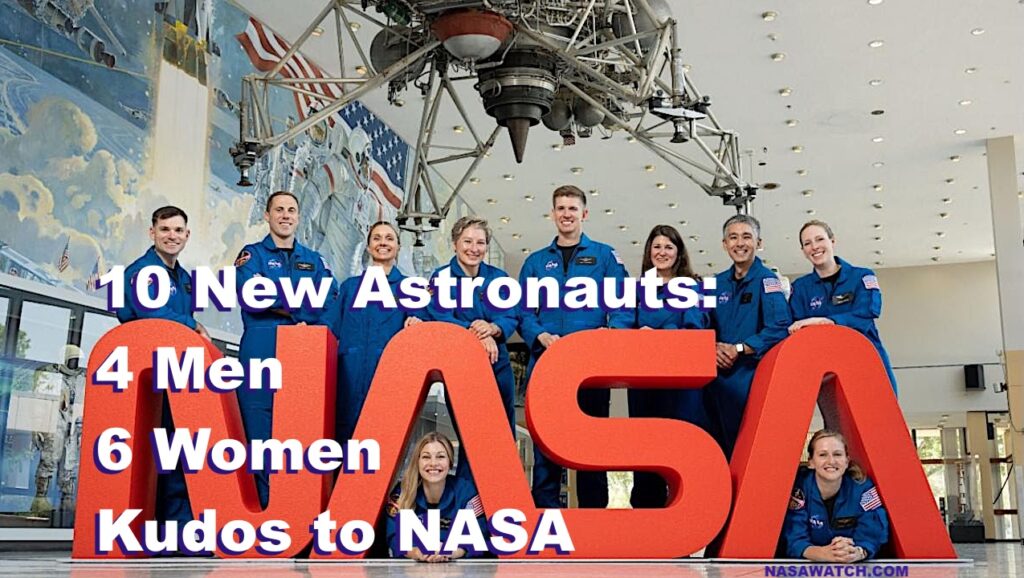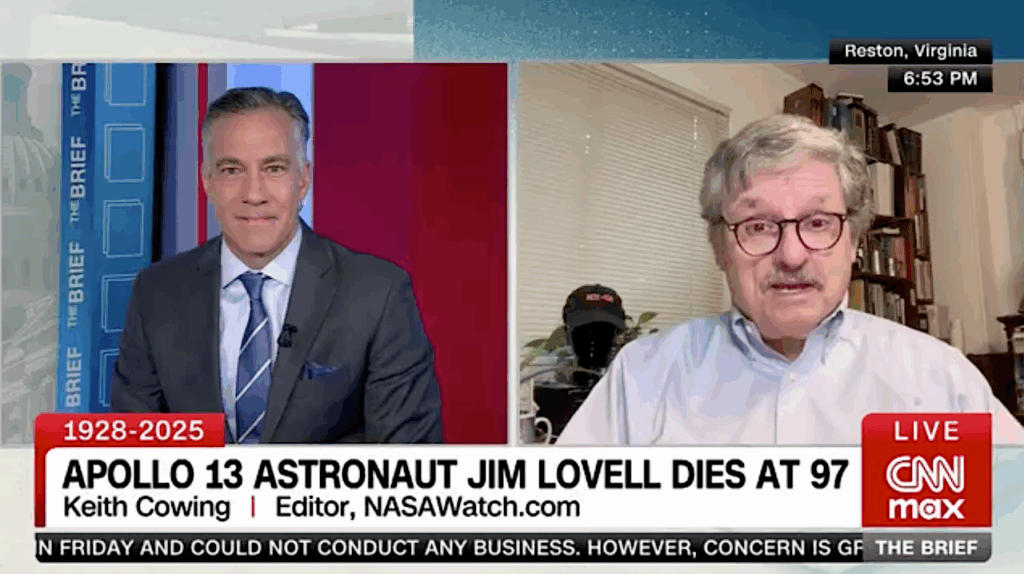Accepting More Personal Risk In Space Exploration
 Keith’s note: People who engage on expeditions to risky and dangerous places on Earth regulary waive certain safety and medical regulations in order to participate. I have done it more than once in the arctic and at Everest. You consider the risks, weigh the benefits, and then sign the forms. There are lifetime radiation exposure limits for astronauts that are supposed to be used to guide the selection of ISS crews. Now, these limits are apparently subject to selective waiver. So are these “limits” now becoming “guidelines”? Are astronauts now doing something similar to what terrestrial explorers do in order to spend more time in space? What is the process whereby NASA makes this waiver decision? What are the implications for the whole #JourneyToMars thing?
Keith’s note: People who engage on expeditions to risky and dangerous places on Earth regulary waive certain safety and medical regulations in order to participate. I have done it more than once in the arctic and at Everest. You consider the risks, weigh the benefits, and then sign the forms. There are lifetime radiation exposure limits for astronauts that are supposed to be used to guide the selection of ISS crews. Now, these limits are apparently subject to selective waiver. So are these “limits” now becoming “guidelines”? Are astronauts now doing something similar to what terrestrial explorers do in order to spend more time in space? What is the process whereby NASA makes this waiver decision? What are the implications for the whole #JourneyToMars thing?
For @AstroPeggy to break this record the radiation dosage limit was waived. It'll be interesting to hear @NASA explain how/why this was done https://t.co/kOdeLnFNDI
— NASA Watch (@NASAWatch) April 25, 2017
?? “#CongratsPeggy: Whitson breaks record, receives call from White House”https://t.co/DUXifwBMlJ
— Intl. Space Station (@Space_Station) April 24, 2017









As long as they’re aware of the risk and the risk has not been concealed or minimized, I think it’s fine. Astronauts are going to have to break the radiation limit on a “Journey to Mars”, or probably for an extended lunar surface excursion (unless we’re far enough along that we’ve buried a moon base).
This is pretty reasonable. The NASA radiation standards are different from the radiation exposure standards in other industries regulated by the Nuclear Regulatory Commission, such as nuclear power. For NASA the goal is to limit lifetime risk for each astronaut to a very specific but arbitrary figure. In industries regulated by the NRC the goal is to keep the workplace as safe as reasonably achievable. There is no “threshold” or safe level for radiation exposure, the first millisievert adds about as much risk as the tenth. I feel there is a pretty good rationale for the NRC approach. If one astronaut is exposed for two years or if two are exposed for one year each, the aggregate risk is the same, even though in the latter case both might be kept below a specific limit that one astronaut, flying the entire mission, might exceed.
However its important that the crew know the risk they are taking, and to some extent this is still being determined. For long term risk, keep in mind that we all face a risk of about 30% for cancer. The additional risk of a flight to Mars (possibly 2-3%) appears to be no greater than the risk of a lifetime of smoking, and could be considerably less. I don’t see anyone saying people should not be allowed to do that.
If one astronaut is exposed for two years or if two are exposed for one year each, the aggregate risk is the same
This seems to me to be distractingly pointless, perhaps illustrating the silliness of the protocol? It reminds me of the plan to use nine women to have a baby in one month.
I guess I don’t follow your point. Does not longer-term exposure to a higher radiation level increase the chances of an individual’s being affected? How can ten times’ exposure not increase health risk? Or is risk being defined in a different way?
Exactly what does it mean to keep a workplace “as safe as reasonably achievable”? Is NASA’s approach way off base from the NRC?
I think he’s talking about threshold effect, which are common for many toxins. That’s when a small dose, even on a daily basis, does nothing harmful (i.e. the body can remove it or filter it out) which a large dose in a short time can be quite dangerous. If the response to radiation were purely linear and cumulative, then the first 0.1 Sv someone were exposed to would be as harmful as going from 1.0 to 1.1 Sv (i.e. same increase in chance of getting cancer, X% per Sv). If there were a threshold, the first 0.1 Sv might be harmless while going from 1.0 to 1.1 Sv might be a big deal.
There are nonlinear effects at extremely high doses, and there are a variety of factors such as age at exposure that affect absolute risk, and there are substantial differences in the risk of various types of radiation injury between the effects of secondary gamma rays, solar protons, and high-Z galactic cosmic rays. But in general the relationship between exposure and risk, up to about 2 Sieverts total exposure, has been found to be reasonably described as linear. https://www.ncbi.nlm.nih.go…
As a result, if two astronauts are each exposed to .5 sieverts, the total risk of excess mortality for both individuals is about the same as the total risk of excess mortality for one astronaut exposed to 1 seivert, so replacing a crewmember on the ISS because he/she is approaching a career limit and sending up a different astronaut with a lower cumulative expose is unlikely to alter total excess mortality.
In the early days of the nuclear industry, when the emphasis was on keeping annual exposure for each employee below a specified level (similar to the current NASA policy), there was a tendency for industry to simply fire workers as they approached the limit and to hire new workers who had not been exposed. This did not lower total risk, however. The risk was just distributed among more individuals.
I had the impression that a threshold level (or nonlinear response) for radiation is a matter of active research. The cancer risk is, for regulatory purposes, assumed to be linear with no threshold, since that’s the worst case. But almost all the high-dose data comes from exposure to a single, large event. We have data on 5 Sv from being too close to a nuclear accident or explosion, but nothing I’m aware of on 5 Sv accumulated over a lifetime at 0.1 Sv/year. (Oh, and if you live in Boulder, you do hear statements that people shouldn’t be allowed to smoke. Well, smoke tobacco at least.)
NASA followed ALARA at least until recently.
In Peggy’s case it might have something to do with age and liklihood to procreate in the future, and because as a scientist she looks upon herself as being the experiment.
The Russians Ive known in their space program have had an unreasonable fear of cancer. They did not permit cancer cells to be carried for experiments for fear the cosmonauts would catch the cancer through atmospheric transmission. We told them they were being unreasonable and that there was zero chance, we had lots of experience, there were multiple barriers…all for nought that time.
I understand the purpose of astronauts waiving personal risk to stretch the envelop and break records so future astronauts can fly safely within the envelop limits. Its also what our brave test pilots do each and every day. I respect Dr. Peggy Whitson and her accomplishments greatly! Her sacrifices and contributions to future space exploration matter.
I understand that space radiation fragments into more radiation penetrating you from different angles when it passes through a plate of aluminum placed between you and the sun which is what the skin of the ISS is made of. When you are in your space suit outside and in direct sunlight, you are only bombarded with a column of sun-beamed radiation passing directly along a straight line originating at the sun. That exposure is directly proportional to your body’s cross-sectional area in direct sunlight.
So, my question is if aluminum plated space habitats like the ISS are magnifying the space radiation exposure on the human body and NASA is testing and successful stretching the radiation exposure limits on the human body because the ISS is all that we have at the moment, wouldn’t inflatable habitats like Bigelow’s that don’t contain aluminum skin be less harmful on space travelers?
And why stop there? Why aren’t we designing and building a radiation tolerable space habitat with a water barrier that absorbs radiation for even longer duration space flights and test it with humans willing to stay in space for 500+ days at a time?
Now that I think about it, is it legal to waive safety requirements this way? An individual can, for something they do on their own initiative (Keith’s examples in the arctic and at Everest) and the NASA radiation rules aren’t, formally, regulation. So those wouldn’t be a problem. But I suspect there are some legal limits. I’d be surprised if a company could tell their workers, “If you want to be considered for a job earning over $10 per hour, you’ll have to voluntarily waive all those annoying occupational health and safety rules.”
I’m not sure about the radiation limits, but in other contexts, the Russians have used medical screening to avoid difficult engineering problems. For example, pre-breathing requirements for extra-vehicular activities. Rather than trying to develop a spacesuit with a relatively high internal pressure, they just added a “not likely to get the bends” requirement to the astronaut selection process.